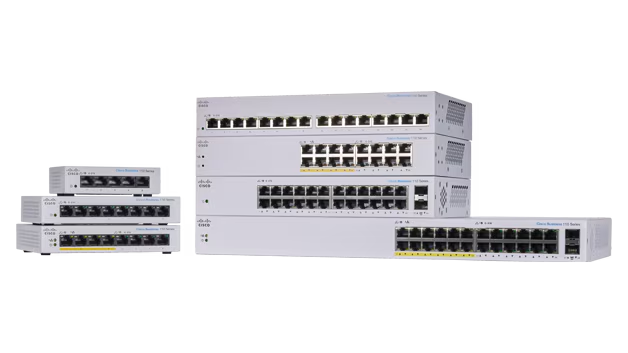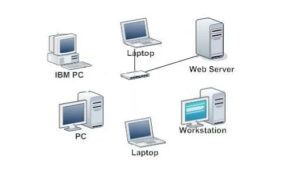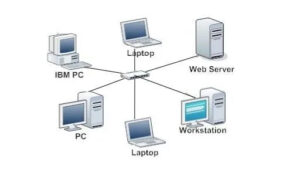Best for Quality, Cost, and Sustainability
When buying networking equipment for home or office you will certainly encounter products described as “used”, “refurbished”, and “remanufactured”.
Each option offers a way to stretch budgets and reduce electronic waste, but understanding the differences can be crucial for making informed decisions.
Used items come directly from previous owners, often with no guarantees.
Refurbished products, on the other hand, undergo testing and minor repairs to ensure they work properly.
Remanufactured goods go through a more rigorous process, often involving complete disassembly and replacement of worn-out parts, making them as good as new.
All of the products sold on this website are Remanufactured, meaning they come factory certified, legally licenced and with full manufacturers warranty – sometimes for the lifetime of the product.
Understanding Used, Refurbished, and Remanufactured
Used products come directly from previous owners without intermediary processing. They generally function as intended, but there’s no guarantee of their condition or longevity. Examples include second-hand smartphones and laptops sold by individuals and companies on platforms like eBay.
Refurbished products should undergo a series of checks, repairs, and, if necessary, component replacements. Manufacturers or certified refurbishers restore these items to a fully functional state. Examples include electronics returned under warranty and later resold by the manufacturer or a third party.
Refurbished products are not covered by the manufacturers warranty, nor do they comply with electrical safety regulations as only the manufacturer can add the required marks.
Remanufactured products have gone through a comprehensive process involving disassembly, cleaning, and replacement of worn-out parts. These items meet or exceed original specifications.
Used vs Refurbished vs Remanufactured
Quality Control: Refurbished items receive inspection and minor repairs, ensuring they function well but may show cosmetic wear. Remanufactured products get a complete overhaul to meet or exceed original standards, often including warranties similar to new products. Used products, without intermediary inspection, could be anything.
Pricing: Used items are typically the cheapest due to their uncertain condition. Refurbished products cost more since they undergo testing and repairs. Remanufactured products, with extensive rebuilding, are usually priced higher than refurbished ones but still cheaper than new items.
Licensing: Networking equipment manufacturers make money by selling licenses, and generally those licenses are not transferable, so buying a used or reconditioned product may not include the legal right to actually use it nor acquire firmware updates should an issue occur.
Software can be legally transferred in Europe, but only if the seller of the license was the original licence owner.
When purchasing second user equipment it is advisable to be aware of manufacturers terms – Cisco’s can be found here.
Longevity: Remanufactured items should last as long as new ones due to replaced components, whereas refurbished items have varying lifespans based on the extent of refurbishment. Used items have unpredictable longevity since they receive no formal repairs or part replacements.
Sustainability: All three types support sustainable practices by extending product lifecycles and reducing waste. Remanufactured products offer the most sustainability through extensive rebuilding, while refurbished and used options also contribute by reusing existing products.
Pros and Cons
Reduced Environmental Impact
Utilising used, refurbished, and remanufactured products significantly lowers environmental waste by extending product lifecycles. Used products, when passed on instead of discarded, reduce landfill contributions. Refurbished products undergo repairs, which requires fewer resources compared to manufacturing new items.
Remanufactured goods, adhering to rigorous rebuilding standards, conserve materials and energy, offering the highest sustainability level. According to the International Resource Panel, remanufacturing can save up to 85% of the material and energy required to produce new products.
Cost Savings
Costs vary among used, refurbished, and remanufactured products. Used items are the most affordable, as they haven’t undergone any reconditioning.
Refurbished items are pricier but offer better reliability due to the repairs and testing performed.
Remanufactured products, while being the most expensive among the three, provide the best value in terms of performance and longevity, often including warranties similar to new products.
Buyers can save significantly without sacrificing quality by choosing the appropriate option based on their budget and needs.
Reliability and Warranty Issues
Used products often lack any warranty, which presents a risk for purchasers.
Used electrcal items may also have hidden issues that appear after some time in use.
Refurbished products typically come with limited warranties, offering better reliability than used items but not matching the coverage found in new products.
Problems may arise with components like power supplies or fans, leading to additional costs for repairs.
Remanufactured goods usually provide warranties comparable to new items, but they could still have minor inconsistencies due to the rebuilding process.
Availability and Selection
Used products encompass a wide range of models and conditions, but finding a specific model in good condition can be challenging. There’s also limited control over the exact specifications.
Refurbished items from certified manufacturers or sellers offer a more consistent selection. However, availability can be restricted to recent models, leaving fewer choices for older products.
Remanufactured goods, while offering high quality, suffer from a narrower selection. This limitation arises because only certain products undergo the extensive remanufacturing process.
As a result, buyers need to compromise between availability, selection, and the desired quality level.
Buying Remanufactured from ITHelp
At ITHelp, we’ve removed the risk when buying second user networking equipment. All of our products are manufacturer certified with original warranty, and legitimate licence.
Warranties: All of the products we sell come with a warranty, ranging from 90 days to lifetime.
All of the equipment we sell is eligible for manufacturer support, and software updates.
Which is better used, refurbished, or remanufactured?
Used products are sold as-is without any guarantees. Refurbished items have been tested, repaired, and cleaned, while remanufactured products have been restored to a like-new condition with original or equivalent parts.
Are remanufactured products reliable?
Yes, refurbished products are reliable, they are tested and repaired before being sold, and all come with a warranty.
How long does remanufactured last?
Remanufactured equipment is considered “good as new” so can be expected to last as long as the new version.





